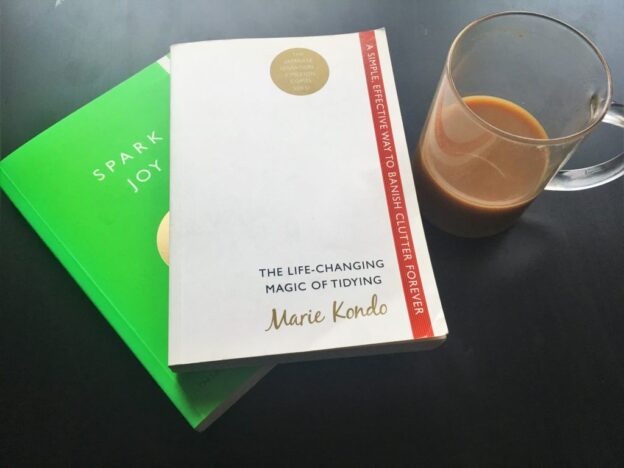I’ve been a long time fan of Marie Kondo and her work, so it’s been great to see her gain so much popularity lately.
Over the past few months, I’ve witnessed dozens of people doing big clear outs, giving stuff away for other people to use, or donating bags to charity. It’s great to see the mindset shift towards having less stuff becoming mainstream.
One thing I get asked about a lot is what I think about her ‘KonMari Method’. Essentially, it consists of six basic rules:
- Commit yourself to tidying up.
- Imagine your ideal lifestyle.
- Finish discarding first. Before getting rid of items, sincerely thank each item for serving its purpose.
- Tidy by category, not location.
- Follow the right order
- Ask yourself if it sparks joy.
There is so much that I love about her method. While I’m not able to sustain the rigorous folding rules of individual clothing items, I do agree with a lot of her philosophy:
Tidying as a reset button
In her book ‘The Life-Changing Magic of Tidying’, she says, “The moment you start you reset your life”. This is so true. Imagining your ideal lifestyle while committing to having a big clear out makes you rethink your relationship to stuff. You can address your anxieties and begin a new phase in your life where you don’t put as much emphasis on buying and having things. Kondo is careful to say that tidying is not a magic bullet that solves all the problems in your life, but since clutter naturally induces distraction and anxiety, getting rid of it is a good way to start.
Storing is not tidying
Tidying, done properly, should not be mistaken for simply making a house neater. “Putting things away creates the illusion that the clutter problem has been solved”, she writes. I’ve seen many people make the same mistake—just because things are hidden in drawers or organised in boxes it doesn’t mean it’s gone, and it doesn’t mean the underlying problem has been addressed. First, one must be willing and able to discard the unnecessary, then they can sort out the important items that are left. Hiding things is a way of not being honest with oneself.
Thank something before you get rid of it
It sounds silly but this has actually helped me say goodbye to things that I otherwise would have found hard to give or throw away. If it’s something that I used or wore a lot, it’s nice to say something like, “Thank you for the memories”. If it was something I didn’t use, at least I can say, “Thank you for teaching me that I didn’t need/suit this”. It helps to think that every item has played a role in my life, whether large or small, but nothing is forever and when it’s time to move on I can still be grateful for it in some way.
Tidy by category in the right order
Her method is clear that the best way to address stuff is in the order of clothes > books > papers > komono (a.k.a. Miscellaneous Items) > sentimental items. The rationale is that it goes from easiest to hardest, so that people can start with momentum, and by the time they get to the end they would have honed their ability to sense what sparks joy and won’t find it as difficult to get rid of sentimental things at the end. I do agree with this reasoning, and she does allow a lot of flexibility, which is just as well because people will differ greatly on what they have a lot or a little of, and what they find easy/difficult so the order might change.
Keep the things that make you happy
Kondo isn’t a traditional ‘minimalist’ as most people think of the word. The criterion she uses to decide whether or not to keep an item is whether or not it ‘sparks joy’. Put simply, if it gives you a good feeling, then keep it. It doesn’t matter if the item is something that is regularly used or not, which is how ‘minimalists’ tend to decide. This way, you look to keep more happiness in your life, instead of chopping stuff out just because it doesn’t get used.
Minimalism and the KonMari method aren’t opposing ideals if you understand that minimalism isn’t about decluttering for the sake of it. Having a tidier house isn’t what’s important—it’s about getting rid of distractions so that you can focus on what matters most to you. It’s not about the number of things you own, but how much they make you happy.
If you think of it like that, minimalism and Kondo’s method have a lot in common. In the end, they both have the same noble goal—to find happiness beyond stuff.

